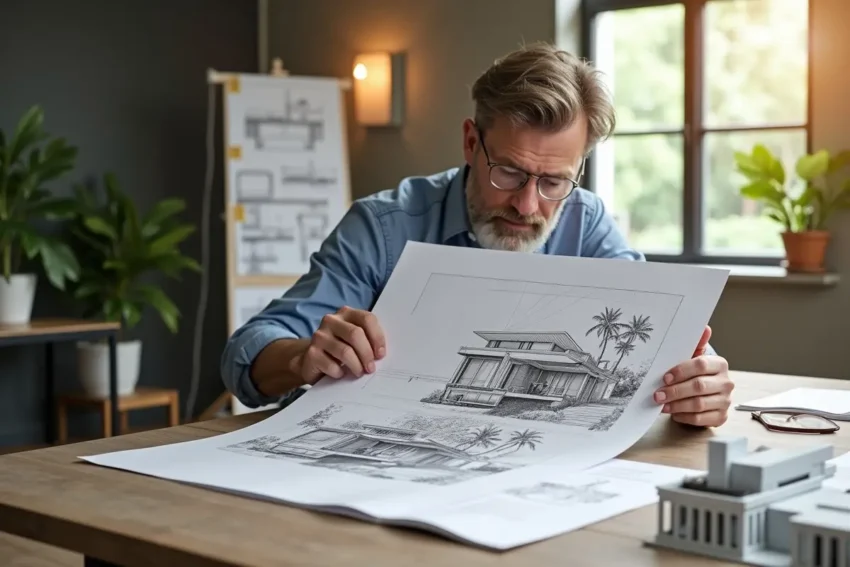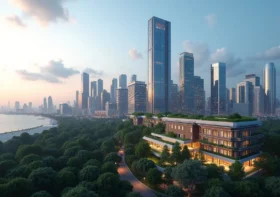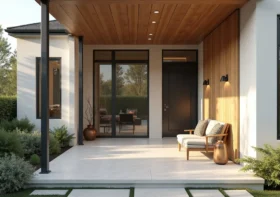Designing Homes That Age Gracefully in Humid Climates

When it comes to home design, few elements challenge durability and beauty like humidity. In regions where the air feels thick and the summers linger, homes are constantly tested. Paint blisters, walls darken, and materials weaken over time. These aren’t just maintenance concerns. They’re signs that design must go deeper—beyond surface aesthetics—to address what the environment demands.
Designing homes that age gracefully in humid climates requires a balance of science, craftsmanship, and local understanding. It’s about choosing materials and layouts that can breathe, move, and endure.
Contents
- 1 The Science of Humidity and Its Impact on Architecture
- 2 Choosing Materials That Endure and Evolve Beautifully
- 3 Design Principles for Airflow, Shade, and Drainage
- 4 Sustainable Strategies for Long-Term Performance
- 5 Lessons from Regional Architecture
- 6 Designing for Patina, Not Perfection
- 7 The Art of Longevity
The Science of Humidity and Its Impact on Architecture
Humidity changes everything. When moisture hangs in the air, it doesn’t just make spaces uncomfortable—it interacts with the very bones of a home. Wood expands and contracts, paint peels, and metal corrodes. Even solid-looking materials like concrete and stucco can crack or absorb moisture if they aren’t properly protected.
In high-humidity regions, water doesn’t need a leak to find its way in. It seeps through pores, builds up in walls, and hides behind finishes. This can lead to hidden mold or structural weakening over time. For homeowners in areas like the Southeast or coastal regions, understanding how humidity affects materials is as important as choosing a design style.
Many homeowners learn this lesson through experience. The issue of stucco failures and remediation, for example, has taught designers and builders that moisture control must start from the design phase. Without proper ventilation and drainage systems, even the most elegant finishes can become liabilities.
Choosing Materials That Endure and Evolve Beautifully
A home built for a humid climate starts with smart material choices. Some materials naturally resist moisture. Fiber cement, treated wood, and lime-based plasters are good examples. These materials don’t trap water the way conventional stucco or untreated wood might.
Natural lime plaster, for instance, allows walls to “breathe.” It manages moisture by letting vapor escape, reducing the chance of trapped dampness. Similarly, fiber cement siding combines the strength of cement with the flexibility of cellulose fibers, making it more resistant to rot and cracking.
Texture and finish also matter. Matte, breathable finishes perform better than glossy, sealed ones because they allow moisture to move. Over time, these materials develop a gentle patina—a visual softness that adds character. A well-designed home in a humid region doesn’t fight nature. It adapts to it and looks better because of it.
Design Principles for Airflow, Shade, and Drainage
Good architecture doesn’t just stand against the elements—it works with them. In humid climates, the goal is to keep air moving and water flowing away. That means wide eaves to protect walls from rain. It means windows positioned to create cross-ventilation. It means foundations lifted slightly above grade so air can circulate underneath.
Designers often borrow from traditional building wisdom. Homes built before air conditioning relied on natural ventilation, shaded porches, and tall ceilings to stay cool. These same principles are just as effective today.
A thoughtful design also integrates functional beauty. Wooden shutters, lattice screens, and covered walkways add visual interest while serving a practical purpose. They block direct sunlight, reduce heat buildup, and give the home a lighter, more open feeling.
Sustainable Strategies for Long-Term Performance
Sustainability isn’t only about energy savings, it’s also about resilience. In humid climates, homes that are designed to last longer naturally reduce waste and resource use. Techniques like rain screens, ventilated cladding, and green roofs extend the life of exterior materials while adding thermal comfort.
Even mechanical systems can play a role in sustainable design. Efficient ventilation systems or whole-house dehumidifiers help maintain stable humidity levels indoors. Paired with thoughtful design, these systems reduce strain on materials and minimize the need for constant repairs.
A home designed this way isn’t over-engineered. It’s simply built with intention, using a combination of natural airflow, smart technology, and durable materials to keep comfort consistent throughout the seasons.
Lessons from Regional Architecture
Look at the architecture of any humid region and you’ll see patterns that make sense. In the Caribbean, broad verandas and raised foundations protect from both moisture and heat. In the American South, wraparound porches and high windows keep homes shaded and breezy.
These aren’t decorative features, they’re practical responses shaped by climate. Modern designers can learn from these traditions while adapting them to current lifestyles. Using local materials and time-tested forms often results in homes that feel rooted and authentic.
When design reflects place, it naturally becomes more durable. The materials are familiar with the climate, and the techniques evolve from generations of lived experience.
Designing for Patina, Not Perfection
In humid environments, perfection fades quickly. Paint chips. Wood tones shift. Metals darken. But that doesn’t mean a home must lose its beauty. Instead of resisting change, the most enduring designs embrace it.
A home that ages gracefully is one that allows materials to evolve naturally. Stone that weathers, copper that turns green, or plaster that softens in tone—all of these create a sense of history and depth. The key is to select materials that transform attractively rather than deteriorate.
When you plan for patina, maintenance becomes less about preserving a flawless look and more about caring for a living design. Over time, a well-built home tells its own story—one that connects craftsmanship with environment.
The Art of Longevity
Designing homes for humid climates is an art of foresight. It’s about blending beauty with practicality, ensuring that every material, joint, and finish serves a purpose. The homes that last are those that work in harmony with their surroundings.
A graceful home doesn’t resist time or weather. It moves with them. By understanding how humidity interacts with materials and design, builders and homeowners can create spaces that stay strong, comfortable, and beautiful year after year.
The goal isn’t just to build for today. It’s to build for the decades ahead—homes that don’t just survive the climate but belong to it.



